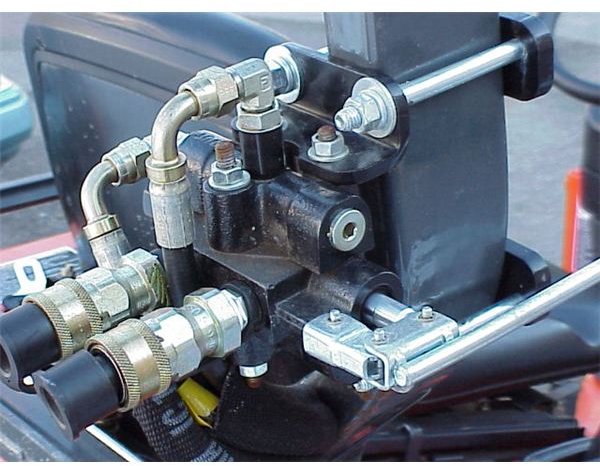Maritime Hydraulics: The Use of Hyrdaulic Systems on Ships
Introduction
Hydraulics is used in every engineering field. It has plenty of advantages over other methods of operation. Its main advantage is, with the application of much less force, a greater work can be done. It has also reduced the manual workload, replaced many humans, and performs better operation and control. It is widely used for automation and control engineering fields, too. In this article, let us discuss the applications of hydraulics with respect to merchant vessels.
Hydraulics and Ships
We all know that a ship is a mobile power plant. It has enormous varieties of machineries for its propulsion, cargo operations, and shipboard safety as well as for maintaining the comfort standards of the crew. In all this wide variety of machinery, hydraulics plays a very vital role. The hydraulic technology is so precise and accurate that they are used in the main engine control and maneuvering systems, too. Let us now discuss on some important hydraulic applications on board ships and a short description of each.
Automation and Control Systems:
The engine room has various machineries, and its parameters have to be controlled precisely to run the ship safely. Earlier man power on board ship was so huge that each crew would have specific jobs to perform. But, with the advent of hydraulic automated control systems, the man power and work loads have dropped to a great extent that the whole ship is now manned by just thirteen to fifteen people. The automated control system may include precise opening and closing of valves and maintaining pneumatic air pressure. The application of hydraulic oil pressure and remote operation of respective valves control the flow of hydraulic oil and perform the required operation. For more exact results, feedback systems have also been incorporated.
Valves Operation:
Depending upon the type of ship, the cargo equipments and machineries vary. In the case of an oil tanker, the main cargo system would include the cargo pumps and the cargo lines which have numerous valves in the lines. It is very difficult and time consuming to operate and perform the cargo operation manually. With the introduction of hydraulic circuits for valve operation, the whole cargo, ballast, and the bunkering operation can be done from just a mimic diagram which is in the control room.
Deck Machineries:
Deck machineries include the deck cranes, winches, mooring drums, windlass, capstans, emergency towing arrangements, hatch covers, and other similar equipment. All these machineries have very simple and basic hydraulic systems involved in smoother and heavy duty operation. In ships like bulk carriers that unload the cargo, it requires either a deck crane or a derrick, which is usually controlled by an electro-hydraulic system. The mooring winches are the machineries that keep the ship tied up to the jetty or to another ship. The anchor is dropped and ship is held in a place by the windlass. They all have hydraulic motors and source of hydraulic oil under high pressure.
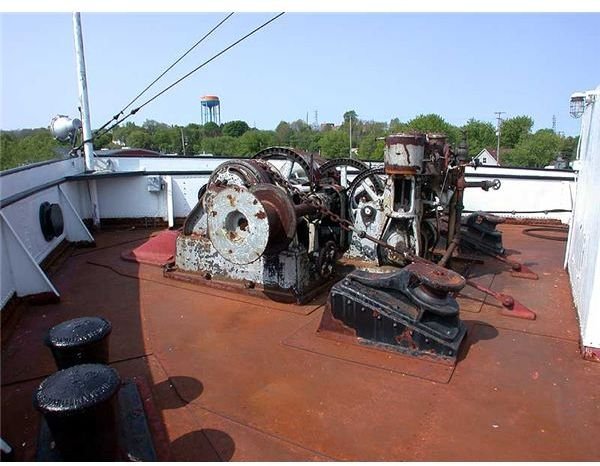
Engine Room Application:
We have witnessed that the size of ship has increased in a drastic manner when compared to what we had a decade ago. As size of the ship increased, the propulsion power demand also increased, and huge monstrous main propulsion engines have been installed on board ships. It is not possible to have huge reciprocating pistons held with normal tightening of engine components. But, with the hydraulic tightening, it is possible to hold the cylinder heads, entablature, and bed plate together. Thus, to perform maintenance and repair operations, it is necessary to use hydraulic pumps and jacks.
Ship Stability:
It would be a great time to sail in a cruise ship with your family. But, what makes it so pleasant without rolling like other ships? These ships have fish like fins called stabilizers that act as a resistance against rolling. These operate under high hydraulic oil pressure and thus reduce rolling to very great extent, making the life on board a cruise ship more comfortable.
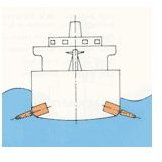
Steering Gears:
Small boats may have a wire attached to the steering wheel and rudder, thus helping in steering the ship. This can be compared to the normal steering of a car against a power steering using hydraulics. As the size of ships increased, mechanical and other means of steering experienced problems, and, thus, electro-hydraulic steering gears are being used.
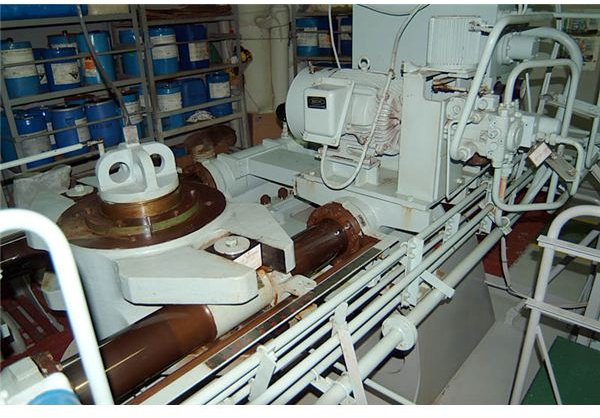
Bow and Stern Thrusters:
The biggest container ship in the world is of the size 14000 TEUs. It is not possible for these ships to deliver cargo, maneuvering in restricted waters, without the bow and stern thrusters. As we know, a bow and stern thruster is a propeller which has a transverse axis of rotation instead of longitudinal axis. To alter the pitch of these thrusters, hydraulics is used, and they perform a very precise and accurate control, thus enabling the ship to maneuver easily.
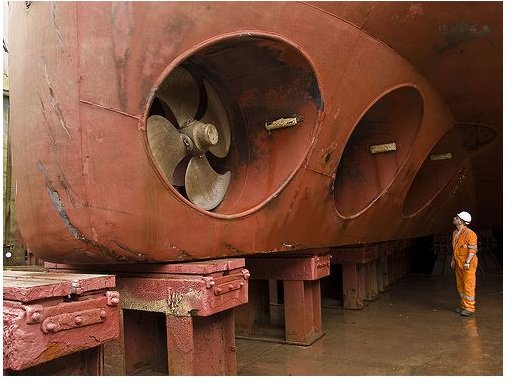
Thus, these are some of the main hydraulic applications on board a ship, and, in future articles, we will discuss each of these hydraulics applications in detail.
Image Credits
